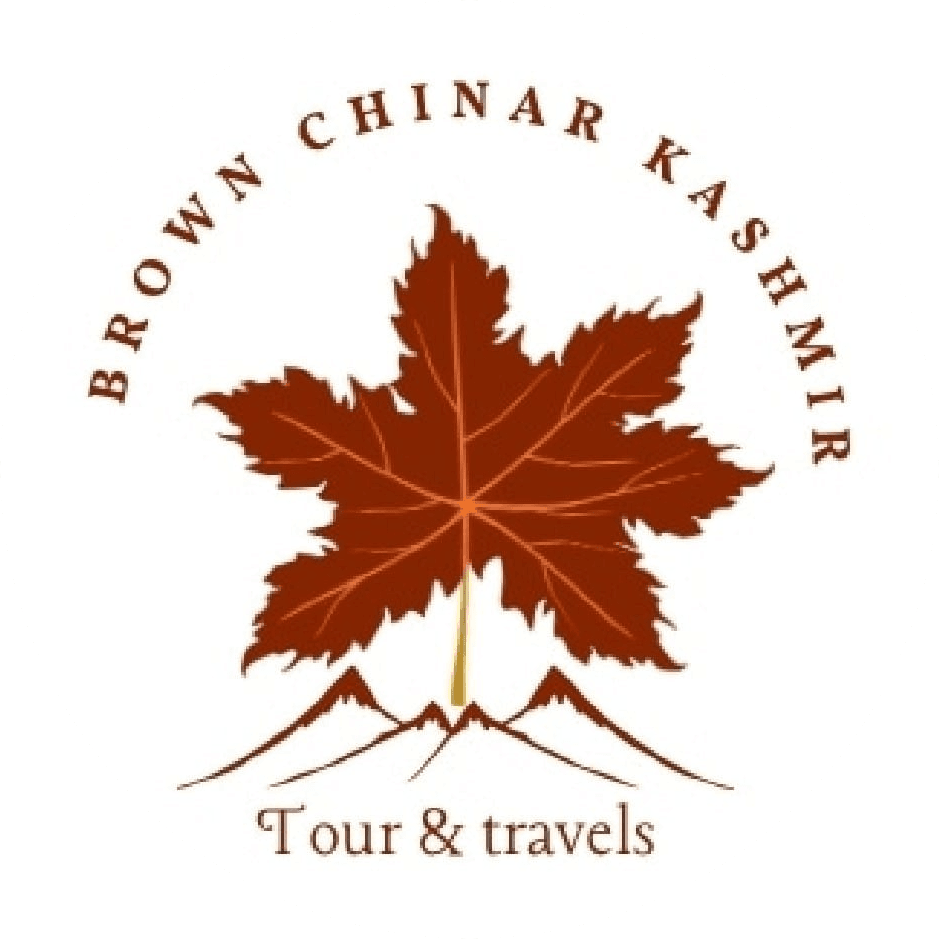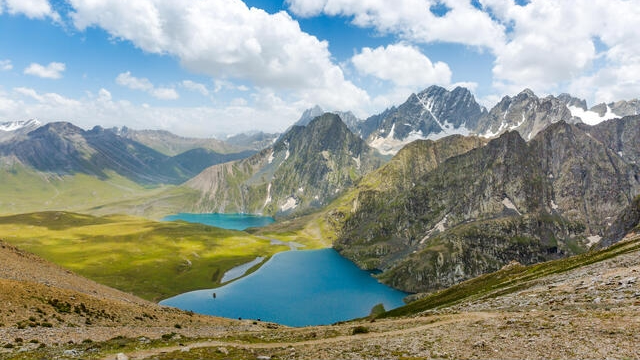Table of Contents
Toggle- Overview
- 1. Turtuk Village: A Quiet Wonder Close to the Pakistan Frontier
- 2. Zanskar Valley: A Lonley and Natural Beauty
- 3. Rangdum Monastery: Serenity in the Heart of Zanskar
- 4. Lamayuru Monastery: The Moonland of Ladakh
- 5. Dah-Hanu Valley: The Brokpa Tribe’s Resident Location
- 6. Shyam Valley: An undiscovered paradise for nature enthusiasts
- 7. Kargil: More Than Just a War Memorial
- 8. Chumathang Hot Springs: A place where you can take a break and relax
- Conclusion
- How to book Ladakh tour online?
- People Also Ask
- What are the best offbeat destinations in Ladakh?
- How do I reach Turtuk Village in Ladakh?
- What makes Zanskar Valley an offbeat destination?
- Can I visit the Zanskar Valley year-round?
- Is it safe to travel to the remote villages like Turtuk?
- What is the significance of the Rangdum Monastery?
- How can I reach the Lamayuru Monastery?
- What is the Moonland landscape around Lamayuru?
- What is the best time to visit Lamayuru?
- What is the culture of the Brokpa tribe in Dah-Hanu Valley?
- Are there any trekking opportunities in Dah-Hanu Valley?
- How do I get to Shyam Valley?
- Can I go camping in Shyam Valley?
- What are the best offbeat activities in Ladakh?
- How do I reach Kargil?
- What is the significance of the Kargil War Memorial?
- Is there any trekking in Kargil?
- Can I visit Chumathang Hot Springs?
- How do I reach Chumathang Hot Springs?
- Are the roads in Ladakh safe for travel?
- How do I get permits for traveling to Turtuk or other restricted areas?
- What type of accommodation is available in offbeat areas like Turtuk or Zanskar?
- Is Ladakh suitable for a road trip?
- What are the challenges of traveling to Ladakh’s offbeat places?
- Can I explore the offbeat places in Ladakh independently?
- How do I prepare for a trip to Ladakh?
- What should I know about Ladakh’s altitude and acclimatization?
- Are there any health precautions to take before visiting Ladakh?
- Inquiry Form
Overview
Ladakh, Land of High Passes, is one of the most magnificent and beautiful regions of India. Ladakh has always been a favorite for travelers looking for adventure because of its untamed wilderness, rugged landscapes and breathtaking sights. While most tourists rush to the popular hotspots like Leh, Khardung La, Pangong Lake, Nubra Valley, and Khardung La, there are numerous offbeat destinations in Ladakh that provide an exceptionally secluded and idyllic experience.
If the wanderer in you is looking for places that are off the grid, this blog will point you to some of the most unspoiled places in Ladakh, gems that are relatively untouched by human civilization and tourism and combine beautiful landscapes, rich culture and deep rooted history. Offbeat destinations in Ladakh offer a lifetime experience whether you are a culture enthusiast, nature admirer or adventure junkie.
From ancient Buddhist monasteries to isolated villages. Here are the most breathtaking offbeat places in ladakh that should be explored.
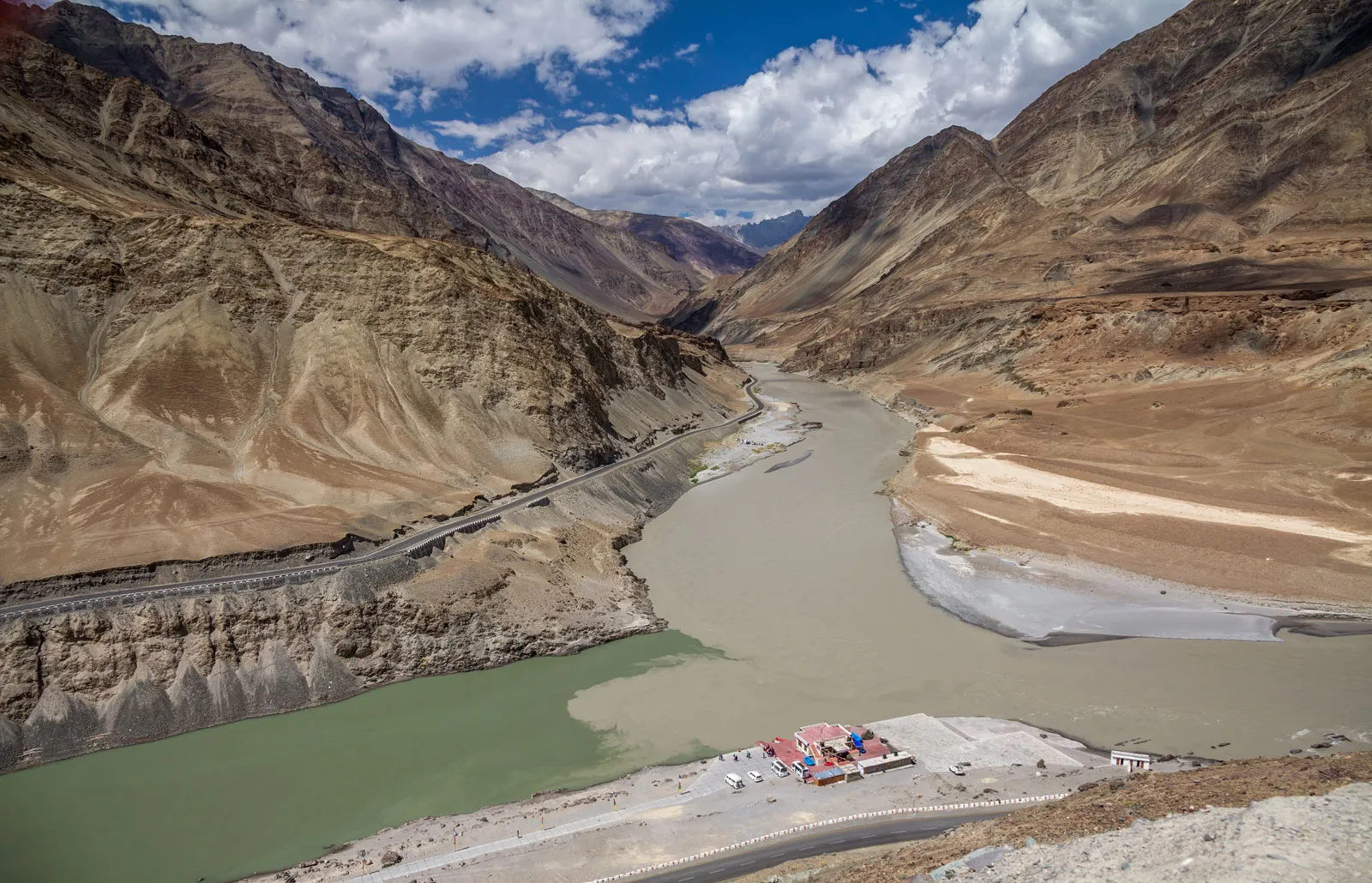
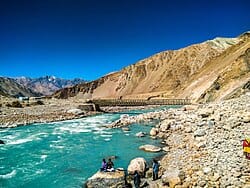

1. Turtuk Village: A Quiet Wonder Close to the Pakistan Frontier
Turtuk is a village at the northernmost part of Nubra Valley. It is rich in heritage and culture and further adds to the intrigue of Ladakh. It is very close to the border of Pakistan. The village was once a part of Baltistan in Pakistan before being annexed by India during the war of 1971. Its history and location offers a beautiful blend of Tibetan and Central Asian cultures.
The beauty and the hush of Turtuk is what captures the heart of many. Unlike other villages in the region, Turtuk does not attract much tourism, allowing tourists who visit to experience undiscovered beauty, tranquility, and refuge from the fast-paced lifestyle of Leh. In addition, it is also renowned for its picturesque apricot orchards which boast some of the best apricots the region has to offer.
The drive to Turtuk Village is a stunning one with mountain ranges, valleys, and rivers providing breathtaking views to everywhere a person turns, drawing the attention of photographers and nature worshippers.
Key Attractions:
- Turtuk Village: Discover the beautiful landscapes of the village and experience a unique and untouched culture.
Apricot Orchards: Explore the blooming orchards that provide top grade apricots. - Views of the Karakoram Range: Appreciate the breathtaking sights of the awe-inspiring karakorum mountains.
- Balti Culture: Appreciate the distinctive Balti culture and warm welcome of the residents.
- Trekking: Trekking options in the surrounding valleys is characterized by hikes with views of glaciers and rugged landscapes.
2. Zanskar Valley: A Lonley and Natural Beauty
Ladakh’s most secluded and untouched area is referred to as “the hidden paradise of ladakh”. While Ladakh’s famous tourist destinations are popular for their picturesque views, Zanskar’s uniqueness lies in its wilderness, dramatic landscapes and difficult to navigate areas, making it ideal for adventure seekers.
The valley is surrounded by towering cliffs, deep gorges, and glaciers, making it a prime location for trekking. One of the most famous treks in Zanskar is the Chadar Trek, which takes trekkers along the frozen Zanskar River during winter. This trek offers a unique and thrilling experience of a frozen river landscape.
The rivers and vegetation activate a stunning wishful wilderness for the purpose of trekking, camping, and river rafting in the summer. The flowing rivers also stimulate spirituality, such as in Stongde Monastery, which is among the largest and oldest monasteries in Zanskar.
Key Attractions:
- Zanskar river: Preferred by trekkers and river rafters for the stimulating glide it offers.
- Chadar Trek: One of the famous treks done over the frozen Zanskar River during the winter season.
- Stongde Monastery: One of the ancient and beautifully constructed monasteries having an exceptional view of the nearby landscapes.
- Padum: The largest township in Zanskar serves as an easy access point to explore the valley.
- Remote trekking trails: Get off the beaten path and find isolated trekking routes leading to unspoiled nature.
3. Rangdum Monastery: Serenity in the Heart of Zanskar
Rangdum Monastery poised along Zanskar Valley has unforgettable views of the mountains. With little people visiting, this 18th-century monastery is perfect for those looking for a peaceful and meditative space, since tranquil Ladakh. Strikingly located in the vast unmapped mountains and green valleys makes this secluded the most peaceful spot.
Rangdum serves as both a center for spiritual retreat and as a base for exploring nearby trekking routes. The region is untouched in its natural beauty, with vast barren lands and towering peaks that dwarf the visitors. The calmness of the region makes it ideal for meditation and deeper soul searching.
Key Attractions:
- Rangdum Monastery: An ancient quiet monastery that exhibits the culture of the Ladakhi Buddhist.
- Panoramic Mountain Views: Exceptional views of the unmatched snow capped mountains and valleys.
- Secluded Environment: The place far away from civilization guarantees peace and enjoyment away from noise.
- Trekking Trails: Unravel trekking paths that lead to some of the most stunning and uncharted areas in Ladakh.
4. Lamayuru Monastery: The Moonland of Ladakh
Frequently branded the “Moonland” of Ladakh because of the terrain’s lunar-like appearance, Lamayuru Monastery is the oldest in the region and most comes to visit. It was established in the 10th century and rocky, unleveled, and eroded hills that resemble the surface of the moon is undergo construction. Everything gives phenomenal landscaping and fill the area like paradise for photographers.
Apart from the monastery, the region around Lamayuru is rich with other undiscovered marvels. The rugged cliffs, expansive wasteland, as well as the green valleys mark the striking landscape that is crossed by the roads leading to the monastery. This treasure trove is ideal for experiencing the serene and picturesque views of Ladakh’s more secluded areas.
Key Attractions:
- Lamayuru Monastery: One of the most historically significant and ancient monasteries in Ladakh which you must visit.
- Moonland Landscape: The peculiar and stunning terrain enclosing the monastery is ideal for exploration.
- Scenic Drives: Road trips are perfect on the way to Lamayuru due to the spinetingling views of the barren landscape.
- Photography: Art enthusiasts will love capturing the beauty and rugged landscapes of Moonland.
5. Dah-Hanu Valley: The Brokpa Tribe’s Resident Location
The Brokpa people, a semi-nomadic tribe with distinct traditions and customs, live in the far western corner of Ladakh where Dah-Hanu Valley is. Their descendants are said to be from Alexander the Great’s army and their culture comprises of Tibetan, Persian, and Central Asian influences which is quite astonishing.
Guests to Dah-Hanu can partake in the exquisite lifestyle of Ladakh by interacting with the Brokpa people and their way of living. The region is famous for its scenic rich landscapes, traditional wooden houses and terraced fields which stand in sharp contrast to the arid regions of other parts of Ladakh.
Key Attractions:
- Brokpa Culture: Discover the wonderful culture, traditions, customs and life of the Brokpa tribe.
- Picturesque Villages: Stroll across the beautiful villages of Dah and Hanu which are marked by their wooden houses.
- Beautiful Landscapes: The valley enjoys bounty of nature that include lush green fields, crystal clear rivers and beautiful mountains.
- Trekking and Camping: Participate in serene trekking and camping activities in this isolated valley.
6. Shyam Valley: An undiscovered paradise for nature enthusiasts
Located between the Indus and Zanskar rivers, Shyam Valley is one of the minimally explored places in Ladakh. This off the beaten path is ideal for those looking to indulge in the unspoiled natural beauty of Ladakh. The valley is adorned with green meadows, clean rivers and steep mountains which provide a perfect serene retreat.
Shyam valley is known for its diverse range of wildlife and plant life, making it an ideal place to visit for nature lovers, as well as drone photographers. Tourists also get a glimpse of the rural culture of Ladakh as they visit small villages situated within the valley.
Key Attractions:
- Using Lush Meadows: Assist with the greeenm meadows as well as the rivers that make the valley a heaven on earth.
- Wildlife and Birdwatching: With its biodiversity, Shyam valley is certainly a paradise for wildlife enthusiasts and bird watchers.
- Camping and Trekking: Rest easy within the tranquil fields, go hiking along the many trails the valley has to offer.
- Traditional Villages: Spend time with friendly people in the isolated quiet villages.
7. Kargil: More Than Just a War Memorial
While travelers may neglect Kargil, the town holds impractical beauty which is often overshadowed by its historical importance relating it to the Kargil war. With Kargil located on the way to Leh, it also serves as a passage for travelers to head towards many unexplored attractions, including Suru Valley, and Drass which is one of the coldest inhabited areas in the world.
The Kargil district Region is culturally diverse with Kashmiris, Central Asians, and Tibetans, balancing its diversity with stunning landscapes and peaceful quiet rivers. While Kargil may not be the most visited site in Ladakh, it is definitely worth seeing for its unique culture.
Key Attractions:
- Kargil War Memorial: An important site to respectfully understand the Kargil conflict.
- Suru Valley: One of the most picturesque and photogenic trekking areas in the region.
- Cultural Influence: A unique picturesque view in the town.
- Drass: The coldest point of India which is also known for the cold aesthetic beauty the mountains offer.
8. Chumathang Hot Springs: A place where you can take a break and relax
Chumathang village is located near Indus River and is known for the hot natural springs that are said to have healing qualities and are located in the remote village which allows you to relax and unwind and enjoy the beautiful view.
Chumathang in addition to the hot springs has several trekking and camping opportunities. The area’s stunning landscapes, combined with the soothing effects of the hot springs, makes it ideal for attaining rest and refreshment in the midst of ladakh’s wilderness.
Key Attractions:
- Mineral Springs: Soak in warm, mineral rich waters known for their healing benefits.
- Trekking and Camping: Explore the picturesque trekking paths and camp in peaceful settings.
Wild camping - Healing Environment: Total relaxation achieved in one of the most serene places in ladakh.
Conclusion
Ladakh is an extraordinary region that offers much more than just its popular destinations. The serene offbeat places in ladakh are surrounded by stunning landscapes and unique cultural experiences providing an ideal chance to connect with nature and culture. What are you waiting for? If you love trekking in remote valleys, meditating in ancient monasteries and interacting with local communities, you are bound to fall in love with these hidden gems.
For the ones looking for adventure, peace, or something authentic, the different destinations of Ladakh offer an authentic escape. If you are prepared to take the path less traveled and experience what Ladakh truly has to offer, then get ready and travel to these hidden gems. A Ladakhi adventure awaits you.
How to book Ladakh tour online?
Contact Brown Chinar at +91 6005039532/+91 9906188874 or Email us at : Enquiry@brownchinarkashmir.com
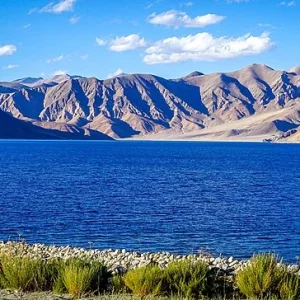
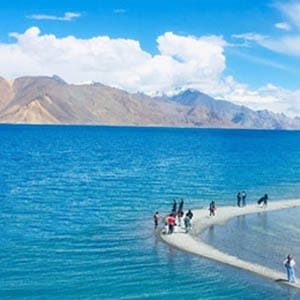
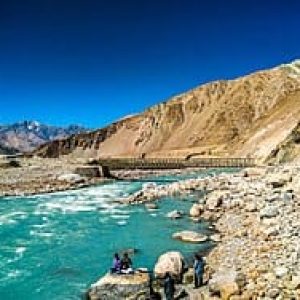
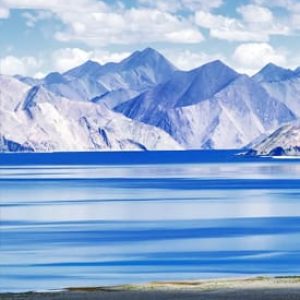
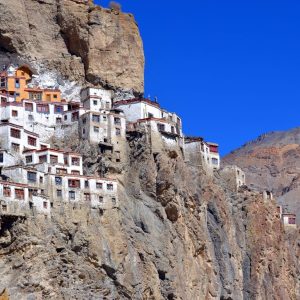
People Also Ask
What are the best offbeat destinations in Ladakh?
Some of the best offbeat destinations in Ladakh include Turtuk, Zanskar Valley, Lamayuru Monastery, Dah-Hanu Valley, and Shyam Valley. These places offer tranquility, unique cultures, and untouched natural beauty, making them perfect for travelers seeking a more secluded experience.
How do I reach Turtuk Village in Ladakh?
Turtuk is located in the Nubra Valley, around 84 km from Leh. You can reach Turtuk by road via the Khardung La Pass or the more scenic Shyok Road. It’s advisable to travel with a local guide, especially if you want to explore the surrounding valleys and off-the-beaten-path trekking routes.
What makes Zanskar Valley an offbeat destination?
Zanskar Valley is famous for its isolation, remote location, and dramatic landscapes. With towering cliffs, deep gorges, and winding rivers, it offers some of the most breathtaking scenery in Ladakh. The valley is less commercialized and perfect for adventure seekers, especially trekkers and photographers.
Can I visit the Zanskar Valley year-round?
Zanskar Valley can be visited year-round, but the experience varies depending on the season. During winter, the famous Chadar Trek takes place, where trekkers walk on the frozen Zanskar River. However, during the summer months, the valley becomes a lush, green paradise, perfect for hiking and river rafting.
Is it safe to travel to the remote villages like Turtuk?
Yes, traveling to remote villages like Turtuk is generally safe. However, it’s important to be aware of the terrain and weather conditions. Always travel with a local guide, and make sure you have the necessary permits to enter regions near the Pakistan border, such as Turtuk.
What is the significance of the Rangdum Monastery?
Rangdum Monastery is a historic Buddhist site that offers a peaceful and spiritual atmosphere. Perched on a hilltop in the Zanskar Valley, it provides panoramic views of the surrounding mountains. The monastery is also a perfect stop for travelers seeking solitude and meditation.
How can I reach the Lamayuru Monastery?
Lamayuru Monastery is located about 127 km from Leh, along the Leh-Kargil road. It is easily accessible by road, and many travelers opt for a road trip from Leh, which offers picturesque views of the barren landscape and the lunar-like terrain surrounding the monastery.
What is the Moonland landscape around Lamayuru?
The Moonland landscape near Lamayuru is known for its unique, eroded terrain that resembles the surface of the moon. This surreal landscape, with its rocky outcrops and deep gorges, provides one of the most striking backdrops in Ladakh and is a photographer’s dream.
What is the best time to visit Lamayuru?
The best time to visit Lamayuru is between June and September when the weather is favorable for travel. During this period, the roads are clear of snow, and the landscapes are lush and vibrant. The winter months can be harsh, and some roads may be closed due to snow.
What is the culture of the Brokpa tribe in Dah-Hanu Valley?
The Brokpa tribe of Dah-Hanu Valley has a distinct culture influenced by Central Asian and Persian traditions. They are believed to be descendants of Alexander the Great’s army, and their customs, dress, and lifestyle reflect this unique heritage. Visitors can interact with the Brokpa people to learn more about their traditions and way of life.
Are there any trekking opportunities in Dah-Hanu Valley?
Yes, there are several trekking routes around the Dah-Hanu Valley, allowing visitors to explore the serene landscapes of the region. The trails lead to beautiful viewpoints, remote villages, and stunning meadows, making Dah-Hanu a paradise for trekking enthusiasts.
How do I get to Shyam Valley?
Shyam Valley is located between the Indus and Zanskar rivers, and while it is less accessible than other parts of Ladakh, it can be reached by road from Leh. The journey involves traversing rugged terrain and scenic routes. It’s recommended to hire a local guide to help navigate the valley and find hidden spots.
Can I go camping in Shyam Valley?
Yes, Shyam Valley is an excellent location for camping. The serene environment, coupled with the lush meadows and clear rivers, makes it a great spot for camping under the stars. There are also trekking trails that lead to isolated campsites surrounded by nature.
What are the best offbeat activities in Ladakh?
Some of the best offbeat activities in Ladakh include trekking through the Zanskar Valley, exploring the remote villages of Turtuk, camping in Shyam Valley, hiking to Lamayuru Monastery, and experiencing the cultural richness of the Brokpa tribe in Dah-Hanu.
How do I reach Kargil?
Kargil is accessible by road from Leh, approximately 220 km away. The journey takes you through scenic landscapes and historical sites. Kargil is also a key stop for those visiting the Suru Valley or other nearby regions. It is well-connected by road, and buses or private vehicles are available for travel.
What is the significance of the Kargil War Memorial?
The Kargil War Memorial commemorates the soldiers who lost their lives during the Kargil War between India and Pakistan in 1999. It is a place of remembrance and respect, providing insight into the war’s significance and history.
Is there any trekking in Kargil?
Yes, Kargil offers several trekking routes, especially towards the Suru Valley and Drass. The region is blessed with breathtaking mountain views, and its less-crowded trekking trails make it perfect for those looking for solitude.
Can I visit Chumathang Hot Springs?
Chumathang Hot Springs is open to visitors year-round, but the best time to visit is during the summer months when the weather is pleasant. The hot springs are known for their therapeutic properties and are a great spot for relaxation after a long journey.
How do I reach Chumathang Hot Springs?
Chumathang Hot Springs is located about 140 km from Leh, along the Leh-Manali Highway. It is accessible by road, and visitors can stop by on their way to other regions in Ladakh. The area surrounding the hot springs is peaceful and ideal for camping.
Are the roads in Ladakh safe for travel?
While Ladakh’s roads are often rugged and challenging, they are generally safe for travelers, provided they take necessary precautions. It’s important to be prepared for high-altitude travel, unpredictable weather conditions, and rough terrain. Hiring a local driver or guide is advisable, especially for more remote areas.
How do I get permits for traveling to Turtuk or other restricted areas?
Travelers wishing to visit Turtuk and other areas near the Pakistan border will need to obtain an Inner Line Permit (ILP). This permit can be obtained in Leh from the District Magistrate’s office. Ensure that your permit is in order before heading to restricted areas.
What type of accommodation is available in offbeat areas like Turtuk or Zanskar?
Accommodation in offbeat areas like Turtuk or Zanskar varies from basic guesthouses to homestays run by locals. In remote locations, you can find small campsites, traditional wooden houses, or makeshift tents. Make sure to book in advance during peak seasons, as options may be limited.
Is Ladakh suitable for a road trip?
Yes, Ladakh is one of the best destinations for a road trip. The region offers a variety of scenic routes, including the famous Leh-Manali Highway and Leh-Srinagar Highway. Traveling by road gives you the opportunity to explore offbeat places, enjoy the landscape at your own pace, and stop at hidden gems along the way.
What are the challenges of traveling to Ladakh’s offbeat places?
Traveling to offbeat places in Ladakh can be challenging due to the region’s remoteness, harsh weather, and rugged terrain. Additionally, high altitudes can lead to altitude sickness, so it’s important to acclimatize properly. Traveling with a guide and being prepared for basic infrastructure is also essential.
Can I explore the offbeat places in Ladakh independently?
While it’s possible to explore some offbeat places independently, hiring a local guide is highly recommended, especially for remote locations like Turtuk or Zanskar. A guide can help you navigate difficult terrain, manage permits, and ensure you have a more enriching and safe experience.
How do I prepare for a trip to Ladakh?
When preparing for a trip to Ladakh, it’s essential to pack for varying temperatures, as weather conditions can change rapidly. Bring warm clothing, sturdy footwear for trekking, sunscreen, a hat, and other travel essentials. Additionally, make sure you have all necessary permits for restricted areas.
What should I know about Ladakh’s altitude and acclimatization?
Ladakh is situated at high altitudes, and visitors may experience altitude sickness, especially in regions above 10,000 feet. It’s important to acclimatize by spending a few days in Leh before traveling to higher elevations. Drink plenty of water, avoid overexertion, and consult a doctor if you feel unwell.
Are there any health precautions to take before visiting Ladakh?
Before visiting Ladakh, ensure you have basic vaccinations, such as for Hepatitis A, Hepatitis B, and Typhoid. Carry a first aid kit with essentials like altitude sickness tablets, pain relievers, and any personal medications. It’s also advisable to consult a travel doctor before your trip for personalized advice.
